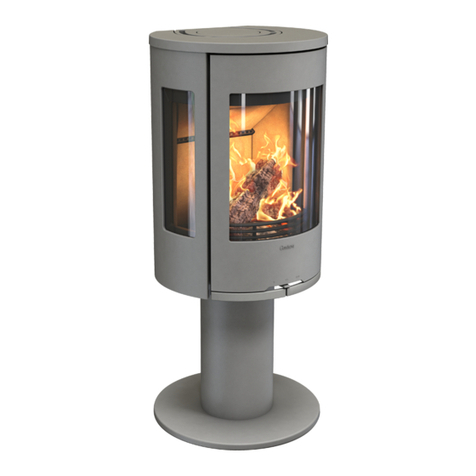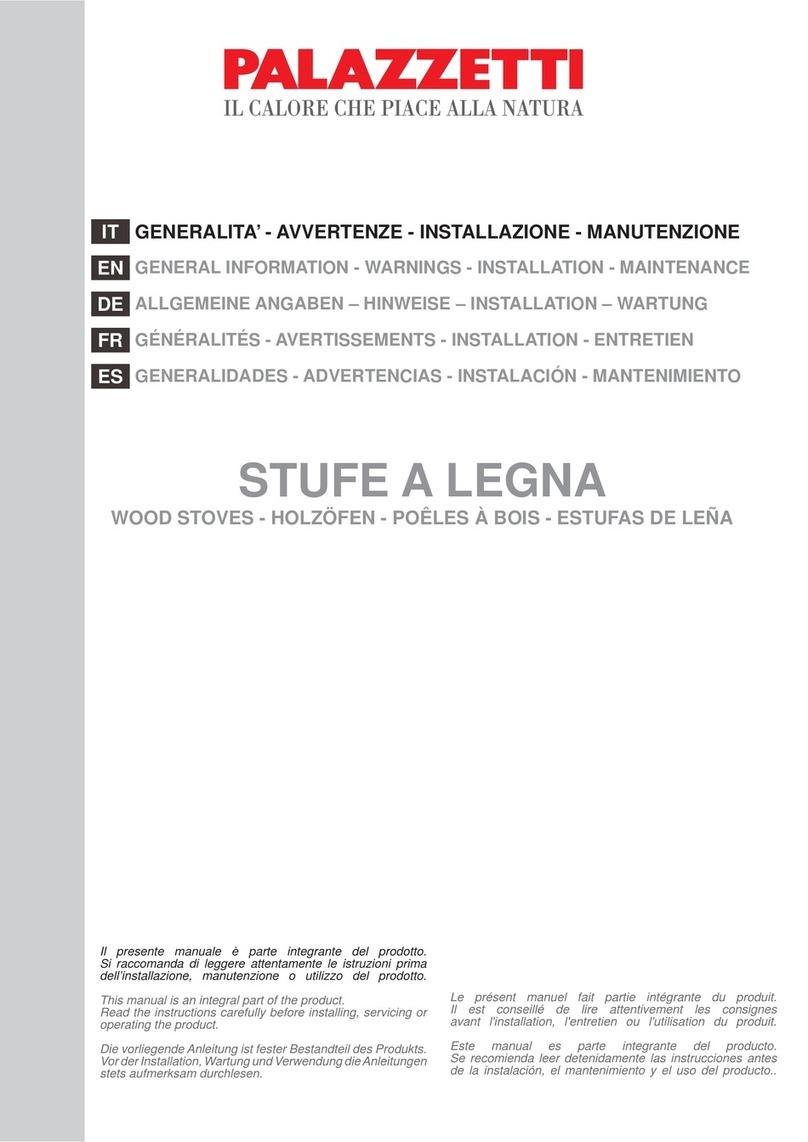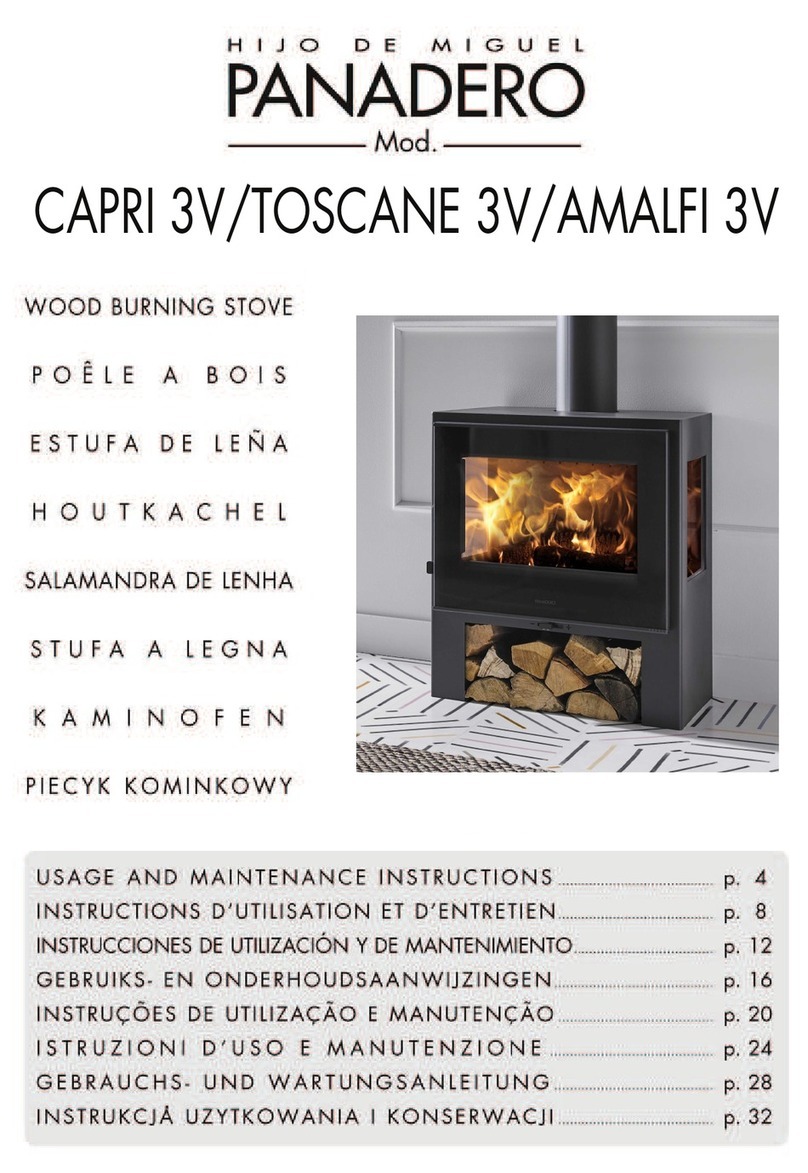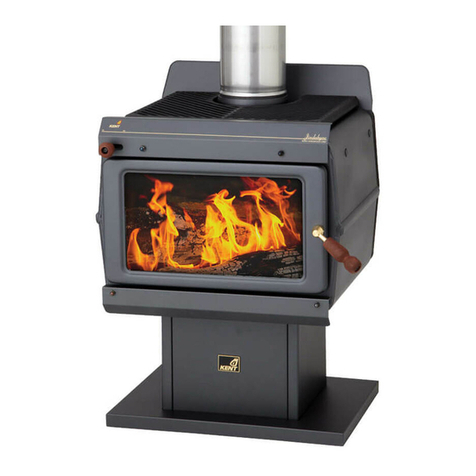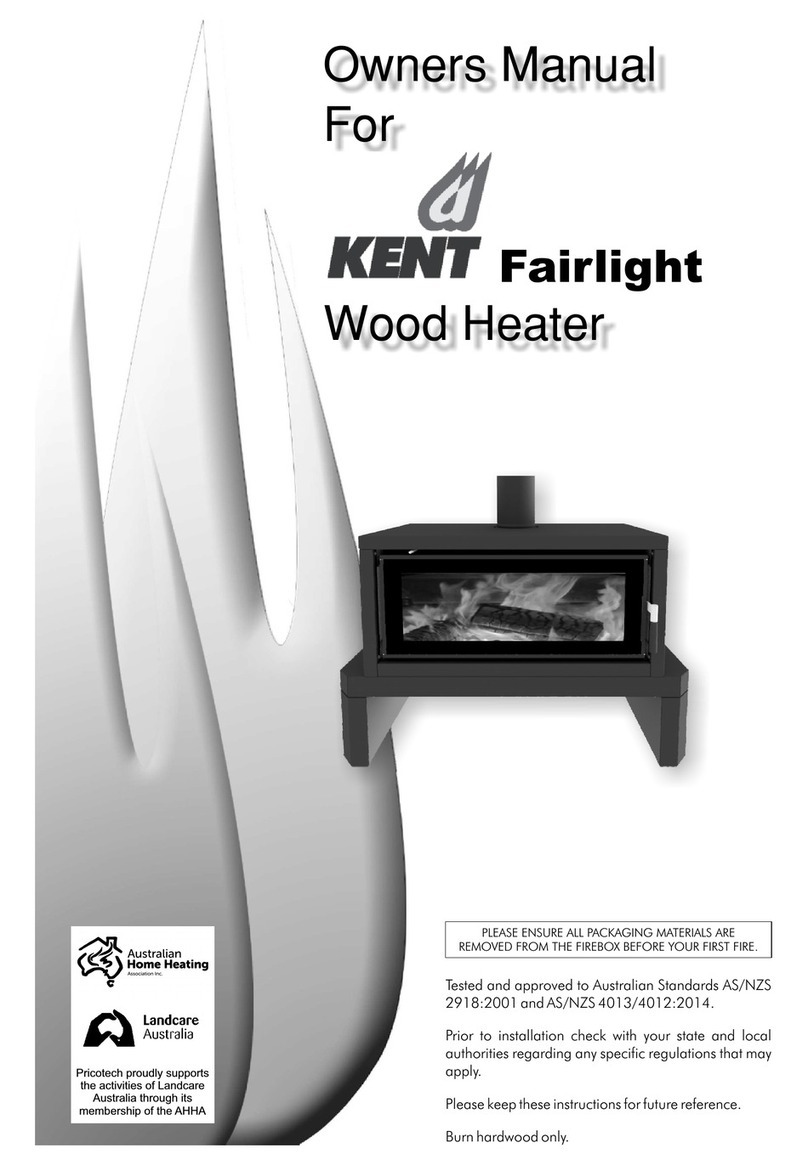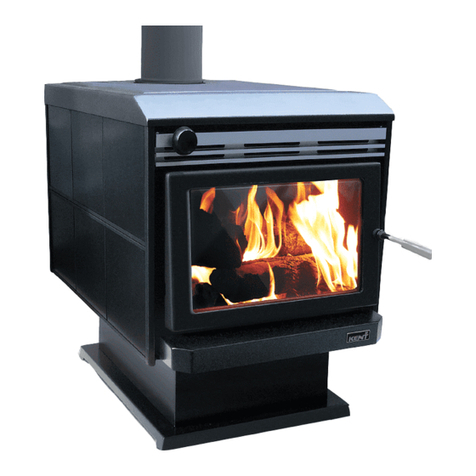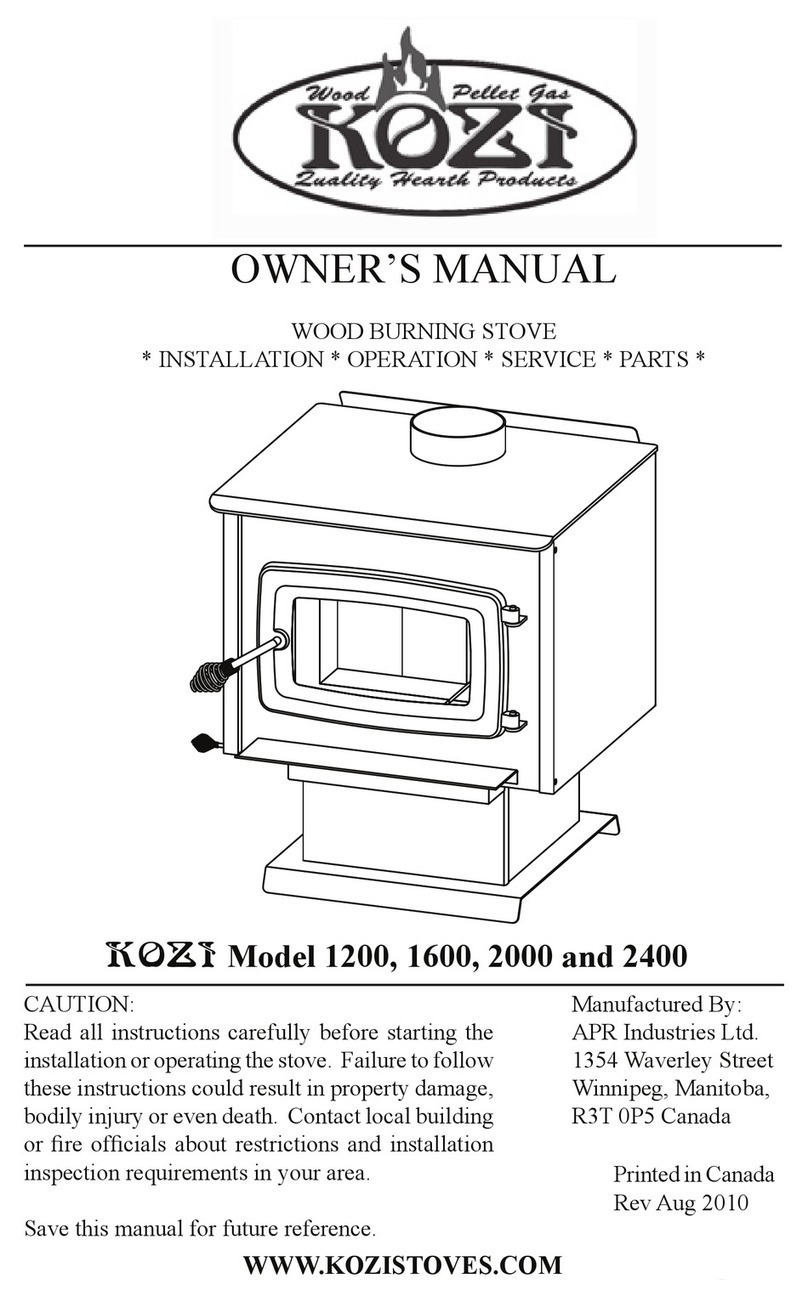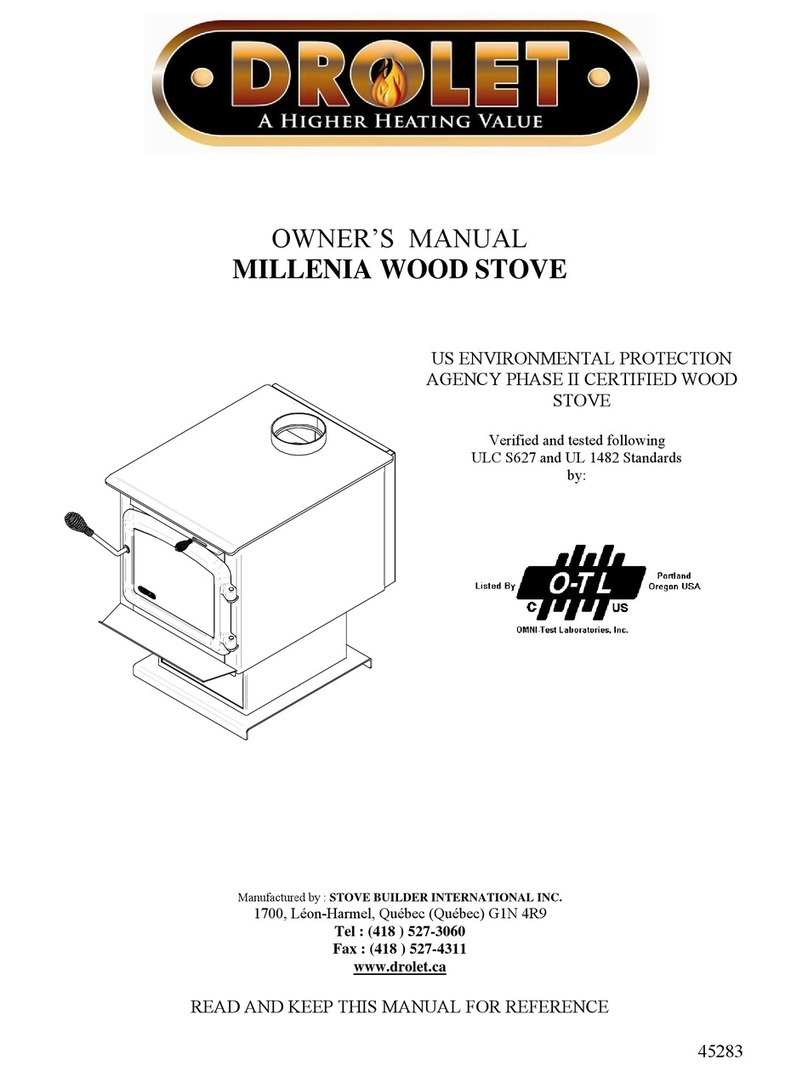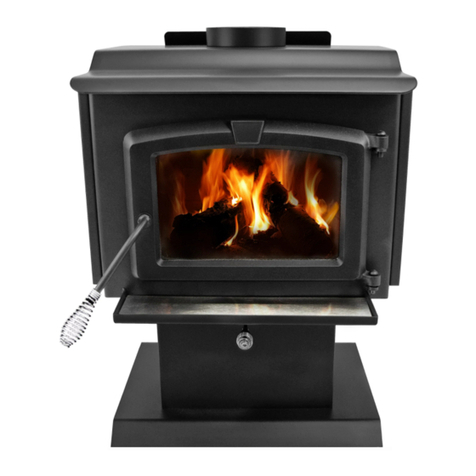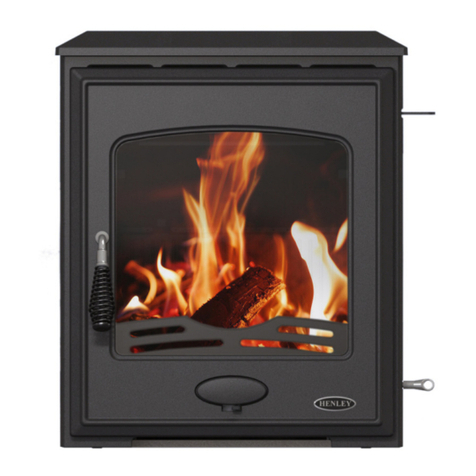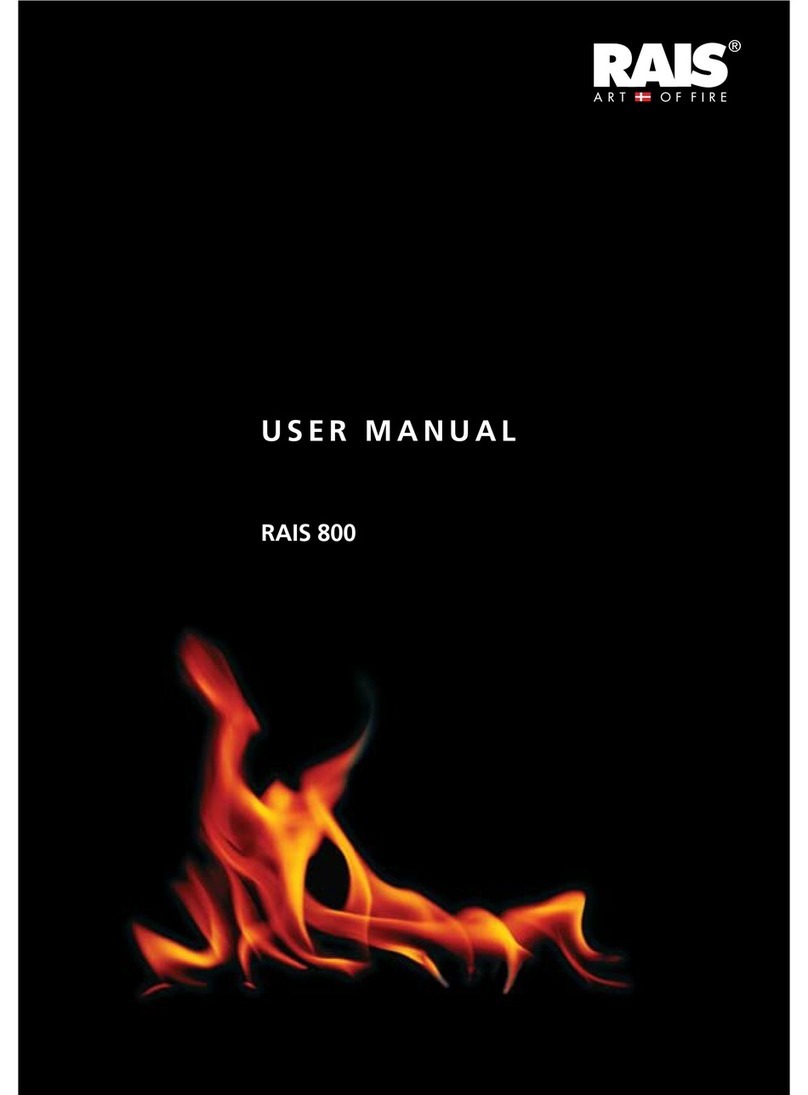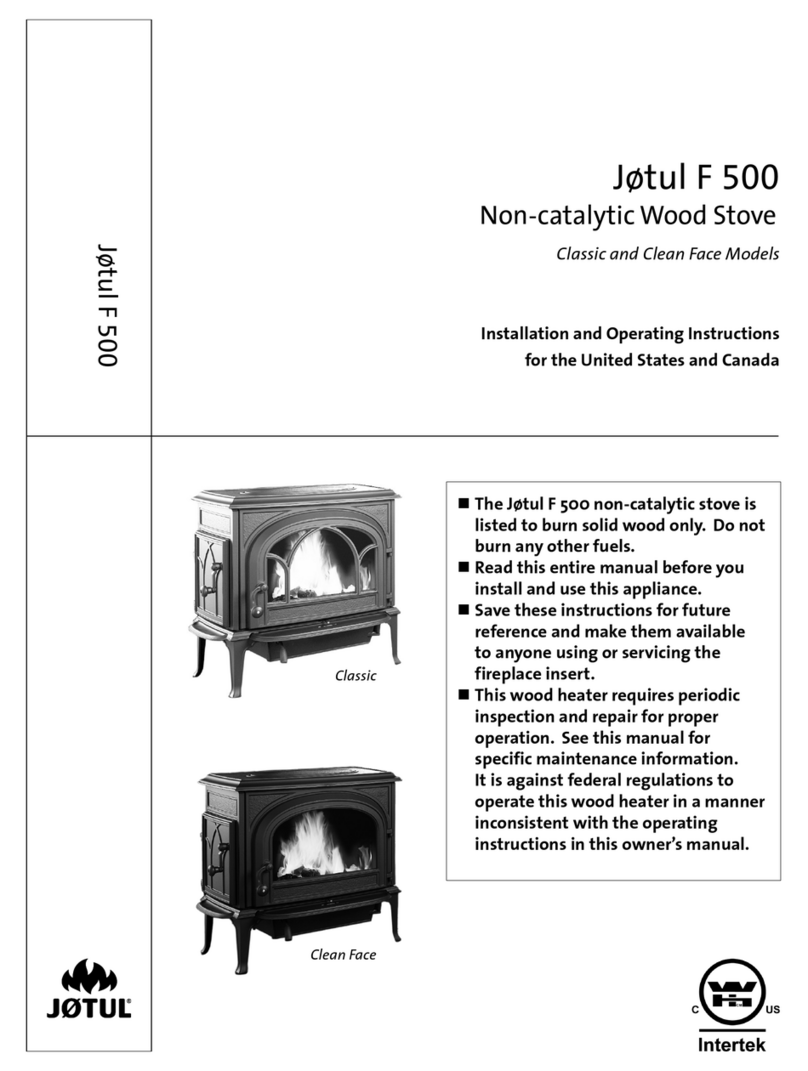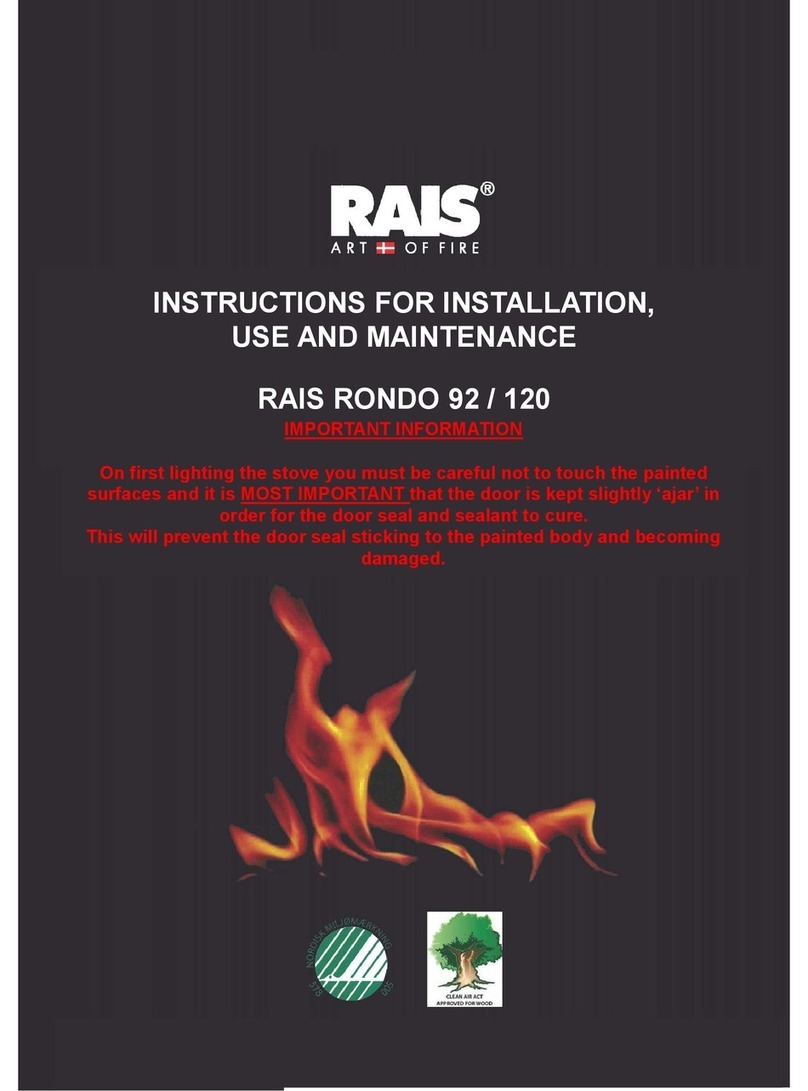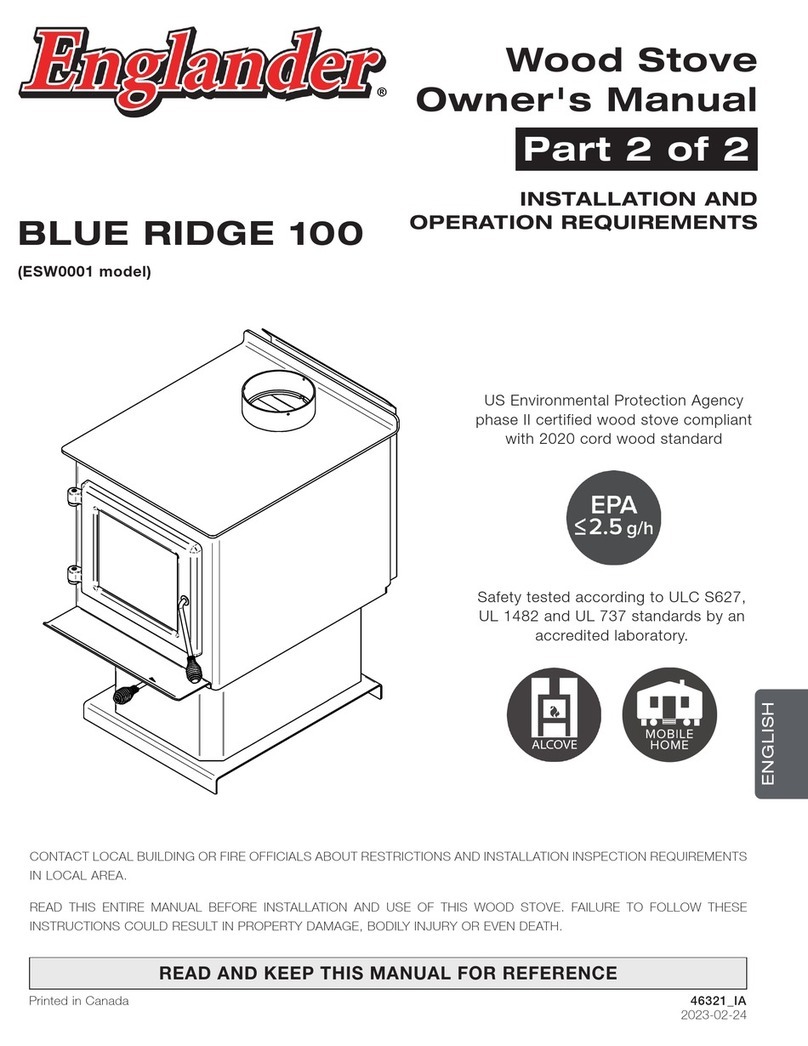CARE AND MAINTENANCE
Your heater has been designed as a heavy duty appliance capable of withstanding normal operating conditions.
CARE
The firebox liners where fitted must be treated with
care. Avoid throwing logs into the firebox as this
may fracture the liners.
CLEANING
To clean painted surfaces, wipe over with a soft,
damp cloth. Do not use harsh solvents and
cleaning agents as these can damage the
coating. Buff dry with a soft, dry cloth.
If your heater is installed in a coastal environment,
where salt air will come in contact with the heater,
this cleaning process should be performed weekly
to avoid the salt causing deterioration of the paint
and subsequently rust.
Door glass: sometimes black deposits will build
up on the inside of the door glass. To remove this
build up, rub gently with a plastic scourer pad
moistened with water and detergent. Then use the
damp and dry cloths as before. Hot glass cleaner
is also available from your heater retailer.
ROUTINE MAINTENANCE
SCHEDULE
At beginning of the season and at least every 8
weeks during the season
*Inspect and clean the flue system. To do this,
remove the baffle plate and flue cowl, and
clean out with a flue brush.
*Check the painted surfaces. If there is any
wear, for instance from cleaning or abrasion,
touch up paint is available from your dealer.
At end of season
*Inspect the door glass for any cracks and
replace if necessary.
*Inspect door rope and seals and replace if
necessary.
*Inspect firebox for wear or excessive corrosion.
*Inspect firebricks where fitted and replace if
broken.
*Check that the air slide moves smoothly. If it is
sticky, lubricate it with high temperature grease
available from your local hardware store.
CREOSOTE BUILD UP
When the heater is continually burnt with lower
than normal fire temperatures, eg due to
unseasoned wood, higher than acceptable
amounts of smoke are produced which condense
on the inside of the flue. This builds up as a black,
tar-like deposit called creosote.
A thin layer of creosote inside the flue is normal
and will not cause a problem. Once there is a
layer more than 3mm thick, problems can occur.
1. If the layer is thick enough, it restricts the flue
and can cause insufficient draw and even
smoke spillage back into the house.
2. More seriously, creosote is combustible, and
can ignite. A flue fire is easy to detect, involving
a roaring sound, a vibration of the flue, and
sometimes flames and sparks shoot out of the
top of the flue.
To avoid creosote build up and the fires that may
result, burn seasoned wood with the air control set
to medium or high for most of the time.
To remove creosote when it does build up, remove
the baffle plate and flue cowl, and use a flue brush
to clean the flue system. To remove the baffle
plate, slide the plate up on one side and then
down around the brackets on the other.
In case of a flue fire, do not panic. Your flue system
has been constructed to withstand high
temperatures. Immediately close the air control
down to its lowest setting. Do not open the door.
Once the fire has extinguished, you should have
your flue system inspected by a qualified service
person.
10


